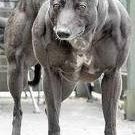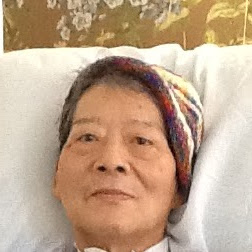Cheng Chang David Lee
age ~42
from Frederick, MD
- Also known as:
-
- Cheng Mimilanie Lee
- Cheng Chang Lee
- Cheng C Lee
- Cheng D Lee
- Chang C Lee
- Chang Lee Cheng
- Chengchang D Lee
- David Lee
- Changsuk Lee
- Chen Lee
Cheng Lee Phones & Addresses
- Frederick, MD
- Germantown, MD
- Flushing, NY
- Houston, TX
- Bryan, TX
- College Station, TX
- Corona, CA
- San Gabriel, CA
Education
-
School / High School:Columbia Law School
Languages
English
Ranks
-
Licence:New York - Currently registered
-
Date:2006
Specialities
Chiropractic
Medicine Doctors

Dr. Cheng H Lee, Houston TX - DC (Doctor of Chiropractic)
view sourceSpecialties:
Chiropractic
Address:
8200 Wednesbury Ln Suite 210, Houston, TX 77074
7137712225 (Phone), 7137711876 (Fax)
7137712225 (Phone), 7137711876 (Fax)
Languages:
English

Cheng V. Lee
view sourceSpecialties:
Family Medicine
Work:
Centerville ClinicsCenterville Clinic
86 Mcclellandtown Rd, Uniontown, PA 15401
7244307990 (phone), 7244307993 (fax)
86 Mcclellandtown Rd, Uniontown, PA 15401
7244307990 (phone), 7244307993 (fax)
Education:
Medical School
Ross Univ, Sch of Med, Roseau, Dominica
Graduated: 2000
Ross Univ, Sch of Med, Roseau, Dominica
Graduated: 2000
Procedures:
Electrocardiogram (EKG or ECG)
Hearing Evaluation
Pulmonary Function Tests
Vaccine Administration
Hearing Evaluation
Pulmonary Function Tests
Vaccine Administration
Conditions:
Abdominal Hernia
Abnormal Vaginal Bleeding
Acne
Acute Pharyngitis
Acute Sinusitis
Abnormal Vaginal Bleeding
Acne
Acute Pharyngitis
Acute Sinusitis
Languages:
Chinese
English
Spanish
English
Spanish
Description:
Dr. Lee graduated from the Ross Univ, Sch of Med, Roseau, Dominica in 2000. He works in Uniontown, PA and specializes in Family Medicine. Dr. Lee is affiliated with Uniontown Hospital.

Cheng L. Lee
view sourceSpecialties:
Family Medicine
Work:
Graybill Medical GroupGraybill Medical Group San Marcos Office
277 Rancheros Dr STE 100, San Marcos, CA 92069
8662282236 (phone), 7604710513 (fax)
277 Rancheros Dr STE 100, San Marcos, CA 92069
8662282236 (phone), 7604710513 (fax)
Education:
Medical School
Creighton University School of Medicine
Graduated: 2008
Creighton University School of Medicine
Graduated: 2008
Procedures:
Arthrocentesis
Destruction of Benign/Premalignant Skin Lesions
Electrocardiogram (EKG or ECG)
Hearing Evaluation
Pulmonary Function Tests
Skin Tags Removal
Vaccine Administration
Wound Care
Destruction of Benign/Premalignant Skin Lesions
Electrocardiogram (EKG or ECG)
Hearing Evaluation
Pulmonary Function Tests
Skin Tags Removal
Vaccine Administration
Wound Care
Conditions:
Abnormal Vaginal Bleeding
Acne
Acute Bronchitis
Acute Conjunctivitis
Acute Pharyngitis
Acne
Acute Bronchitis
Acute Conjunctivitis
Acute Pharyngitis
Languages:
English
Spanish
Spanish
Description:
Dr. Lee graduated from the Creighton University School of Medicine in 2008. He works in San Marcos, CA and specializes in Family Medicine. Dr. Lee is affiliated with Palomar Health Downtown Hospital Campus and Pomerado Hospital.
Us Patents
-
Field Effect Flow Control Apparatus For Microfluidic Networks
view source -
US Patent:20030127329, Jul 10, 2003
-
Filed:Jun 1, 2002
-
Appl. No.:10/159914
-
Inventors:Donald DeVoe - Bethesda MD, US
Cheng Lee - Ellicott City MD, US -
International Classification:G01N027/26
G01N027/447 -
US Classification:204/454000, 204/451000, 204/601000
-
Abstract:One embodiment of the invention relates to a microfluidic apparatus for controlling fluid flow velocity during electroosmotic flow. According to one aspect of the invention, a voltage applied to a gate electrode modulates flow velocity within an associated microchannel, where the gate voltage is separate from any voltage used to induce electroosmotic flow. According to another aspect of the invention, the flow control apparatus combines multiple gate electrodes to control flow in a microfluidic network. According to one embodiment of the invention, the flow control apparatus is fabricated in a planar silicon substrate. According to another embodiment of the invention, the flow control apparatus is fabricated using polymer materials.
-
Devices And Methods For Correlated Analysis Of Multiple Protein Or Peptide Samples
view source -
US Patent:20060019399, Jan 26, 2006
-
Filed:Jul 1, 2005
-
Appl. No.:11/171427
-
Inventors:Brian Balgley - Annandale VA, US
Jonathan Cooper - Walkersville MD, US
Cheng Lee - Ellicott City MD, US
Donald DeVoe - Bethesda MD, US -
International Classification:G01N 33/00
-
US Classification:436086000
-
Abstract:Disclosed is a system for performing multiple analyses of protein and/or peptide samples and correlating the results of the analyses. The system comprises a sample inlet, a splitter means, at least two sample delivery capillaries, at least two sample deposition tools, and at least two sample collectors, wherein said splitter means is in fluid communication with the sample inlet and the sample delivery capillaries, and wherein liquid flow entering the splitter means is split into a number of sub-flows equal to the number of sample delivery capillaries. In one preferred embodiment, at least one microenzyme reactor is interfaced to a first sample delivery capillary in order to digest a protein sample within the capillary, while a second sample delivery capillary does not contain a microenzyme reactor, thereby enabling correlated analysis of the same protein sample in digested and undigested form. Methods for performing two or more analyses of protein and/or peptide samples and correlating the results of the analyses are also disclosed.
-
Methods And Apparatus For Porous Membrane Electrospray And Multiplexed Coupling Of Microfluidic Systems With Mass Spectrometry
view source -
US Patent:20060192107, Aug 31, 2006
-
Filed:Oct 5, 2005
-
Appl. No.:11/242842
-
Inventors:Donald DeVoe - Bethesda MD, US
Yingxin Wang - Columbia MD, US
Cheng Lee - Ellicott City MD, US
Yan Li - Bethesda MD, US -
International Classification:B01D 59/44
-
US Classification:250288000
-
Abstract:Disclosed are an apparatus, system, and method for performing electrospray of biomolecules, particularly peptides, polypeptides, and proteins. The apparatus comprises at least (1) a microfluidic substrate for containing an electrospray microchannel for delivering analyte molecules to a side edge of the substrate, and (2) a porous membrane attached to the side edge for performing electrospray from the exposed membrane surface. In one preferred embodiment, the exposed membrane surface is positioned above a target surface for depositing analyte molecules onto the target surface by electrospray. In another preferred embodiment, a proteolytic enzyme is bound to the porous membrane for performing protein digestion during electrospray.
-
Methods And Compositions For Inducing Torpor In A Subject
view source -
US Patent:20070213295, Sep 13, 2007
-
Filed:Jan 16, 2007
-
Appl. No.:11/623625
-
Inventors:Cheng Lee - Houston TX, US
Jianfa Zhang - Houston TX, US -
International Classification:A61K 31/7076
-
US Classification:514047000
-
Abstract:The present invention relates to the discovery the 5′-AMP and analogues thereof can be used to induce a state of torpor or suspended animation in subjects, as exemplified by studies carried out in laboratory mice. In these studies, mice were injected with high doses of 5′-AMP, which was found to result in a decoupling of the animals' body temperature regulation mechanism accompanied by a reduction in the animals' core body temperature, which tended to lower towards the ambient environmental temperature. It was further discovered that the introduction of high levels of 5′-AMP resulted in an induction of fat regulation genes such as procolipase (Clps) in tissues and organs that do not normally express Clps, this in turn was accompanied by a shift in metabolism from a primarily glycolytic energy metabolism (which is inhibited at lower temperatures) to one that relied primarily on the liberation and metabolism of free fatty acids. Substantial medical and other applications that arise out of this discovery are also disclosed.
-
Methods And Compositions For Inducing Torpor In A Subject
view source -
US Patent:20110059916, Mar 10, 2011
-
Filed:May 17, 2010
-
Appl. No.:12/781760
-
Inventors:Cheng Chi Lee - Houston TX, US
Jianfa Zhang - Houston TX, US -
International Classification:A61K 31/7076
A61P 3/00
A61P 9/00
A61P 11/06
A61P 25/00
A61P 25/28
A61P 35/00 -
US Classification:514 47
-
Abstract:The present invention relates to the discovery the 5′-AMP and analogues thereof can be used to induce a state of torpor or suspended animation in subjects, as exemplified by studies carried out in laboratory mice. In these studies; mice were injected with high doses of 5′-AMP, which was found to result in a decoupling of the animals' body temperature regulation mechanism accompanied by a reduction in the animals' core body temperature, which tended to lower towards the ambient environmental temperature. It was further discovered that the introduction of high levels of 5′-AMP resulted in an induction of fat regulation genes such as procolipase (Clps) in tissues and organs that do not normally express Clps, this in turn was accompanied by a shift in metabolism from a primarily glycolytic energy metabolism (which is inhibited at lower temperatures) to one that relied primarily on the liberation and metabolism of free fatty acids. Substantial medical and other applications that arise out of this discovery are also disclosed.
-
Quaternization Process For Ion Exchange Membranes
view source -
US Patent:43225012, Mar 30, 1982
-
Filed:Sep 22, 1980
-
Appl. No.:6/189414
-
Inventors:Cheng H. Lee - Wyckoff NJ
Jay M. S. Henis - Creve Coeur MO -
Assignee:Monsanto Company - St. Louis MO
-
International Classification:B01J 4112
C08F 832 -
US Classification:521 32
-
Abstract:A process is disclosed for quaternizing reactive substituent haloalkyl groups in hollow fiber polymer membranes wherein such haloalkyl groups are reacted with an amine quaternizing agent in the presence of an electrolyte compound and, preferably, in the presence of a cationic quaternary ammonium halide surfactant. In addition, there is disclosed a process of quaternizing the reactive haloalkyl groups in anisotropic hollow fiber polymer membranes by contacting and permeating a solution of an amine quaternizing agent from the surface of the membrane which is to be exposed to a dialysis feed solution.
-
Direct Immunoassay Using Ph-Sensitive Fluorochromes
view source -
US Patent:53345371, Aug 2, 1994
-
Filed:Nov 14, 1991
-
Appl. No.:7/791309
-
Inventors:Cheng S. Lee - Columbia MD
Ping Y. Huang - Baltimore MD -
Assignee:The University of Maryland - College Park MD
-
International Classification:G01N 33543
G01N 33536 -
US Classification:436518
-
Abstract:The complexing of an antibody-antigen binding pair is determined by observing the change in fluorescence of a pH-sensitive fluorochrome attached to one of the members of the binding pair. When the binding is conducted in a solution having a pH other than the isoelectric point of the antibody, there will be a change in the pH of the microenviromnent surrounding the fluorochrome. This change will correspond to a change in the observed fluorescent intensity. Either member of the binding pair can be labeled, and combined with that member whose presence is suspect, in an immunoassay.
-
Tube-In-A-Tube Electronic Sensors
view source -
US Patent:20140342949, Nov 20, 2014
-
Filed:Mar 14, 2014
-
Appl. No.:14/213015
-
Inventors:YuHuang WANG - Laurel MD, US
Jia HUANG - Shanghai, CN
Allen NG - Silver Spring MD, US
Yanmei PIAO - College Park MD, US
Cheng S. LEE - Ellicott City MD, US -
Assignee:University of Maryland, College Park - College Park MD
-
International Classification:G01N 27/22
B01J 19/12
G01N 33/00
G01N 33/543 -
US Classification:506 32, 422 8202, 422 69, 506 39
-
Abstract:The present invention is directed to tube-in-a-tube electronic materials and electronic chemical sensors comprising tube-in-a-tube configurations such as covalently functionalized double-walled carbon nanotubes.
Name / Title
Company / Classification
Phones & Addresses
President
Empire Seafood Restaurant
Eating Place
Eating Place
21 Belleville Ave, Bloomfield, NJ 07003
9737433388
9737433388
President
Chang Cheng Restaurant, Inc
Eating Place
Eating Place
1546 Myrtle Ave, Brooklyn, NY 11237
7183660114
7183660114
Director, President
D's Chopstix, Inc
5004 Kirby Dr, Houston, TX 77098
Manager, Principal
LR SERVICES, LLC
Business Services at Non-Commercial Site · Nonclassifiable Establishments
Business Services at Non-Commercial Site · Nonclassifiable Establishments
8200 Wednesbury Ln STE 210, Houston, TX 77074
422 Brk Shr Ct, Sugar Land, TX 77478
422 Brk Shr Ct, Sugar Land, TX 77478
Dc
Injury Center of Houston
Chiropractor's Office
Chiropractor's Office
8200 Wednesbury Ln, Houston, TX 77074
7137712225
7137712225
Executive Committee
CENTER FOR PAIN REHABILITATION, PA
8200 Wednesbury Ln STE 210, Houston, TX 77074
CPC HEALTHCARE, PLLC
8200 Wednesbury Ln, Houston, TX 77074
MANSFIELD
Resumes

Cheng Lee
view sourceLocation:
United States

Cheng Lee
view sourceLocation:
United States
License Records
Cheng Hua Lee
Address:
Houston, TX
License #:
09176 - Active
Category:
Chiropractic
Issued Date:
Feb 14, 2002
Expiration Date:
Oct 1, 2017
Isbn (Books And Publications)


Financial Analysis and Planning: Theory and Application
view sourceAuthor
Cheng F. Lee
ISBN #
0201044757

Financial Analysis and Planning: Theory and Application a Book of Readings
view sourceAuthor
Cheng F. Lee
ISBN #
0201044498


Advances in Financial Planning and Forecasting: A Research Annual, 1987
view sourceAuthor
Cheng F. Lee
ISBN #
0892326247

Metaficcion Y Mundos Posibles En La Narrativa De Jose Maria Merino
view sourceAuthor
Cheng Chan Lee
ISBN #
8484483304
Lawyers & Attorneys

Cheng Ping Lee - Lawyer
view sourceAddress:
Simpson Thacher & Barlett
66406128xx (Office)
66406128xx (Office)
Licenses:
New York - Currently registered 2006
Education:
Columbia Law School

Cheng Tsung Lee
view source
Moh Cheng Lee
view source
Cheng Chenge Lee
view source
Kg Cheng Lee
view source
Cheng Hyang Lee
view source
Cheng Lee Ying
view source
Tan Cheng Lee
view source
Gavin Cheng Lee
view sourceYoutube
Classmates

Cheng Lee
view sourceSchools:
Duncan Polytechnical High School Fresno CA 1988-1992
Community:
Monique Sims, Cynthia Frank

Cheng Lee
view sourceSchools:
Everest High School Schofield WI 2002-2006
Community:
Ann Bowen, Lori Scheel

Cheng Ning Lee
view sourceSchools:
Syracuse University Syracuse NY 1989-1993
Community:
Lawrence Friedman, Richard Steiner, Ruth Lundberg

Cheng Lee
view sourceSchools:
Fond Du Lac High School Fond Du Lac WI 1996-2000
Community:
Amy Puetz

Cheng Lee
view sourceSchools:
Patrick Henry High School Minneapolis MN 2000-2004
Community:
Brad Hempel, Daniel Amsden

Alberta College of Art &a...
view sourceGraduates:
Soo Cheng Soo Cheng Lee (1978-1982),
Laurieanne Gruber (1974-1975),
Armand Roy (1968-1972),
Jennifer Park (1990-1994)
Laurieanne Gruber (1974-1975),
Armand Roy (1968-1972),
Jennifer Park (1990-1994)

Central Kitsap High Schoo...
view sourceGraduates:
Cheng Lee (1988-1992),
Maria Racalto (1981-1981),
Jason Hurst (1992-1996),
Doris Sipe (1955-1959),
Shawn Nelson (1986-1990),
Jason McGovern (1994-1998)
Maria Racalto (1981-1981),
Jason Hurst (1992-1996),
Doris Sipe (1955-1959),
Shawn Nelson (1986-1990),
Jason McGovern (1994-1998)

Johnson & Wales Unive...
view sourceGraduates:
Chain Cheng Lee (1998-2000),
Suzanne Markham (1996-1998),
Mustafa Murat Balmumcu (1995-1995),
Krishna Pisipati (1991-1992),
Patricia Clift (1995-1997)
Suzanne Markham (1996-1998),
Mustafa Murat Balmumcu (1995-1995),
Krishna Pisipati (1991-1992),
Patricia Clift (1995-1997)
Plaxo

mr. cheng dher lee
view sourcen.c.p.

Cheng Lee
view source
Cheng Lee
view sourcePast: Database Analyst at UT Southwestern Medical Center

Ms Lee Cheng
view sourceKuala Lumpur,Malaysia
Flickr
Googleplus

Cheng Lee

Cheng Lee
Tagline:
Woot... night shift is the shift!

Cheng Lee

Cheng Lee

Cheng Lee

Cheng Lee

Cheng Lee

Cheng Lee
Get Report for Cheng Chang David Lee from Frederick, MD, age ~42





![MY CREATOR by Cheng Lee [Official Video] MY CREATOR by Cheng Lee [Official Video]](https://i.ytimg.com/vi/PM5fumIdIv0/hq720.jpg?sqp=-oaymwEcCNAFEJQDSFXyq4qpAw4IARUAAIhCGAFwAcABBg==&rs=AOn4CLB30IUMoBYWe2Uu5ItJhh1_TUdDHA)







